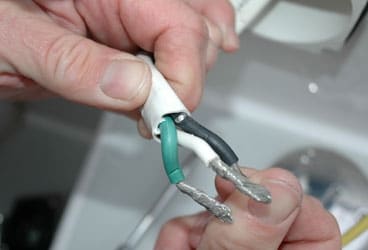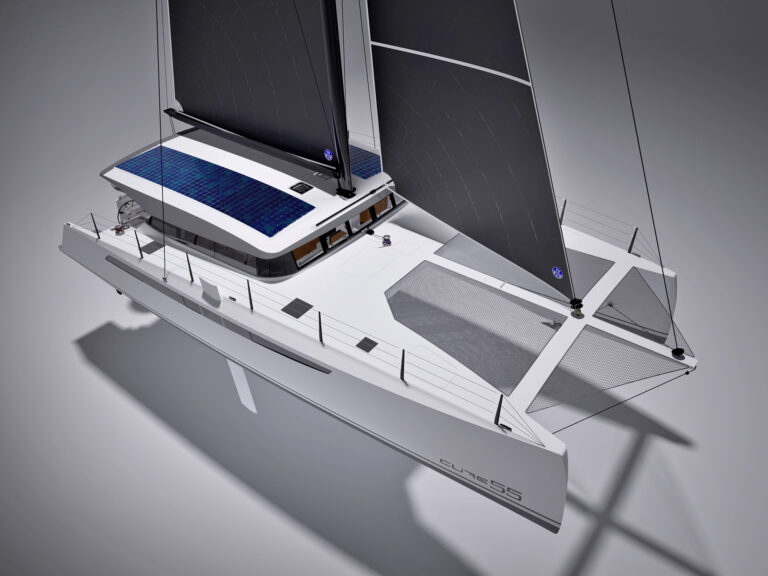
ground checking 368
AC electricity, either from shore or from a generator or inverter, is common on modern cruising boats. It’s typically found in 120-volt and sometimes 120/240-volt configurations, with either 30- or 50-amp service.
You’ve no doubt noticed that most modern 120-volt receptacles have three holes and that most plugs have three prongs. The smaller of the two blade-shaped prongs is the “hot” leg, meaning that it carries the current; the larger of the two is the neutral or grounded leg. The round or U-shaped prong is the grounding leg, also referred to as the safety ground. Though the latter two prongs have similar names, there’s an important difference between the grounded and grounding legs in a live circuit.
The neutral or grounded prong and receptacle connect to the white AC wiring throughout the boat and connect or are referenced to similar wiring ashore or at the source of power, be it a generator or inverter. In an AC circuit, this white wire returns current to the source of power, and it’s carrying current at all times, or at least whenever a load is present.
The wire that connects to the grounding leg is green, and this wire is also connected to ground ashore or to the safety ground and the neutral on the genset or inverter. In an AC circuit, the green wire doesn’t normally carry current; its sole mission is to carry fault current safely to ground or its source in order to trip a circuit breaker or blow a fuse.
In practice, if the hot wire in a circuit becomes damaged and makes contact with a metal object such as a tank, engine block, or metallic appliance case, the fault current, or short, will be carried to ground or the source via the green grounding circuit.
Aboard a boat, this circuit connects not only to elements of the AC system-electrical-appliance cases, the chassis inside these appliances, and outlets-but also to such objects as tanks, engines, and water heaters. This green circuit provides ground-fault protection in case a hot conductor makes contact with any one of them. If this safety ground isn’t in place, a metal object could become energized-and ultimately could electrocute a crewmember who touches the object and completes a path to ground.
The first time I witnessed a system like this in action was as a child at home. As I waited for my toast to brown in the toaster, the insulation on the cord melted away where it’d come into contact with the grounded appliance. When the hot conductor sheathed within the cord made contact with the toaster, it produced a brilliant flash, I was scared out of my 6-year-old wits, and the fuse blew at the fuse panel, rendering the fault safe.
Visually check your AC safety ground-those green wires-and make certain that all your grounding wires are in good condition and free of corrosion. Inspect the ends of the shore-power cord and receptacles for corrosion on all prongs; examine outlets for any sign of corrosion or overheating. Finally, purchase and leave installed a portable receptacle tester, which can alert you to many, but not all, shore-power and grounded/grounding system faults.
Steve D’Antonio offers services for the marine industry through Steve D’Antonio Marine Consulting (www.stevedmarine consulting.com).








